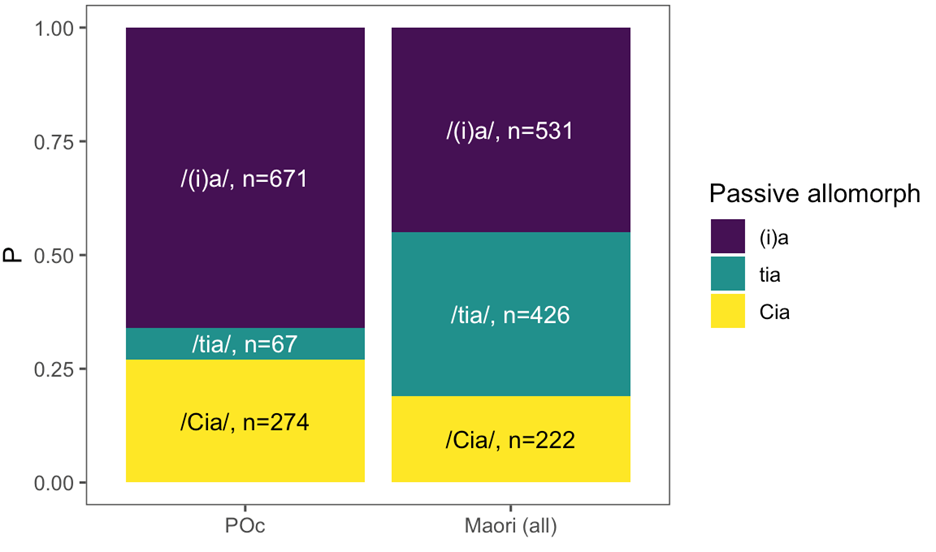When morphophonological paradigms are mislearned, this can result in a type of language change, referred to here as reanalysis.
This research examines patterns of reanalysis in Māori stem/passive pairs; the Māori passive suffix is a valuable case study because it has at least ten allomorphs whose distribution is partially unpredictable (e.g. paː/pa:-ia ‘stockade’, inu/inu-mia ‘drink’, ai/ai-tia ‘to copulate’, motu/motu-hia ‘to separate’), making it prone to reanalysis.
Results suggest that there has been extensive reanalysis away from the vowel-initial allomorphs /-a/ and /-ia/, even though these were historically the most frequent. This goes against existing probabilistic models of morphophonology, which reanalysis to be frequency-driven.
I propose that while reanalysis is guided by frequencies, it is also motivated by the reduction of phonological markedness. In the case of Māori, I argue that reanalysis away from /-a/ and /-ia/ is motivated by the avoidance of marked syllable structures.
Figure: Distribution of passive allomorphs in POc (pre-reanalysis) and Māori (post-reanalysis), demonstrating a marked decrease in the vowel-initial /(i)a/ and increase in /tia/ over time

